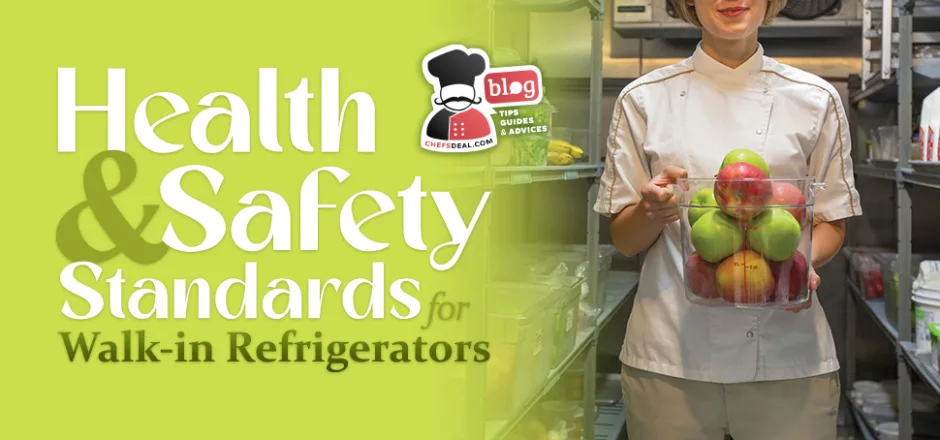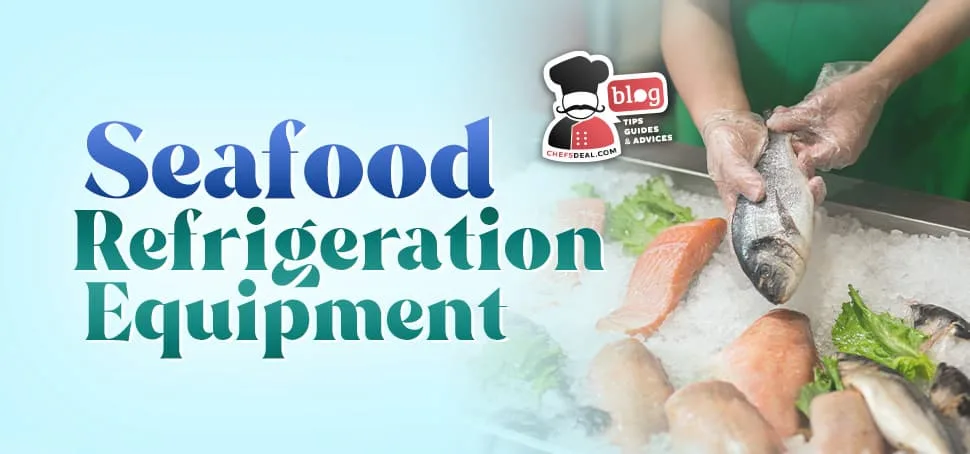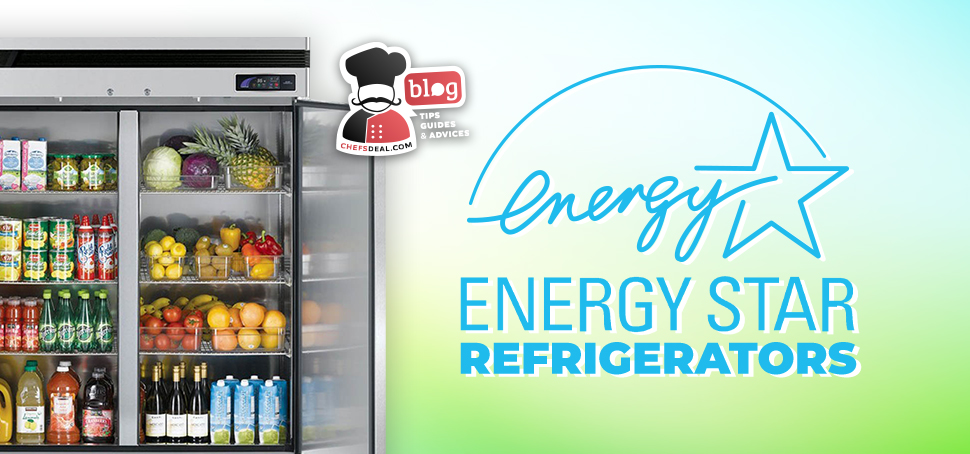Health and safety standards for walk-in refrigeration use encompass all standardized measures taken to minimize the risks to public and staff health and safety.
Ensuring safety and compliance in walk-in refrigeration is crucial for protecting public health and employee welfare in the food service industry. This involves a multifaceted approach including stringent temperature and security monitoring, routine professional cleaning, comprehensive staff training, and robust emergency protocols to mitigate food spoilage during power outages.
Established under OSHA in 1970, these regulations underscore the necessity of internal safety mechanisms, emergency lighting, and accessibility features to prevent hazards like entrapment and slips. Legal compliance and best practices are vital, emphasizing the importance of maintaining optimal storage temperatures (35°F – 45°F (1.66°C – 7.22°C)) for coolers and 0°F to -10°F (-17.77°C to -23.33°C) for freezers), ensuring equipment efficiency, and rigorous record-keeping. NSF requirements dictate design rules, and USDA dictates how the walk-in should be organized to avoid health hazards and cross-contamination.
Key strategies cover the implementation of supplemental safety equipment such as non-slip mats and PPE and enhancing workplace security, while failure to comply can lead to legal actions, health hazards, operational disruptions, and reputational damage. Regular maintenance checks, emergency preparedness, ergonomic considerations, and staff training in safe work practices and emergency responses are essential for preventing accidents and ensuring coordinated action in emergencies.
Adherence to walk-in refrigerator standards is about regulatory compliance and is fundamental to operational excellence in the food service industry. It protects the safety and well-being of employees and customers, securing the long-term success and credibility of food service establishments. Integrating safety protocols, maintaining legal compliance, and implementing best practices for walk-in refrigeration are indispensable for upholding the highest standards of food safety, employee health, and industry reputation.
What are OSHA Walk-in Regulations?
OSHA walk-in regulations are regulations and guidelines set out by OSHA to ensure the safety of staff members who are exposed to potential hazards such as cold temperatures, slips, entrapment, and similar by working in and around a walk-in unit.
OSHA was created in 1970 by Congress to ensure the safety and health conditions of workers. The organization is a part of the United States Department of Labor and is responsible for setting and enforcing standards for occupational safety and offering training and assistance services to businesses. The following are OSHA walk-in regulations and guidelines to ensure you are up to code and as safe as possible while operating a walk-in cooler or freezer.
- Train properly all staff members to operate the walk-in and must be informed of all exit points and features, such as opening the door from the inside.
- Hold refresher training seminars periodically to ensure all staff members are up to date on mechanic upgrades and changes.
- Do not allow workers younger than 16 to operate walk-in freezers according to child labor laws.
- Minimize isolated work in coolers and freezers, especially if the staff is required to work outside of working hours, in remote locations such as the basement, or for long periods of time.
- Check if anyone is left inside before you lock the unit.
- Equip your staff members with proper personal protective equipment (PPE), especially for working in freezers for relatively long periods of time. Freezer workwear might include but is not limited to, heavy jackets and coats, headgear and gloves, long-sleeved shirts, thermal pants and underwear, insulated shoes, and long woolen socks. The aim is to keep blood flow circulating and retain as much body heat as possible.
- Keep floors dry and clear to prevent slipping and tripping. Clean any spilled product immediately, and clear out the passageways to the best of your ability to avoid tripping hazards.
- Make sure that the doors can be opened from the inside. Panic bars (crush bars) or other means of release mechanisms are absolutely required for operating walk-in coolers and freezers.
What are Walk-in Design Requirements and Safety Features?
Walk-in refrigeration design requirements and safety features are internal safety release mechanisms, emergency lightning, ceiling plus, alarms, and exit doors.
- Internal Safety Release Mechanisms: Internal safety release mechanisms (safety release latches) allow occupants to open the door from the inside. Walk-in freezer emergency releases are required by codes to prevent entrapment. Business owners are obligated to check up on walk-in cooler locks and releases periodically and carry out immediate maintenance in case of mechanical failures.
- Emergency Lighting: Emergency lighting ensures visibility inside the walk-in unit during power outages or other emergencies. This way, occupants can evacuate safely or continue to work without falling or tripping, depending on the emergency.
- Ceiling Plugs: Ceiling plugs ensure that your floors are decluttered and cords don’t create a tripping hazard. They are very convenient and indirectly serve as a safety measure.
- Alarm: Alarms alert personnel to issues such as temperature fluctuations or equipment malfunctions, allowing for timely response to maintain food safety. Alarms can be rang if a person is stuck inside and the emergency release latch fails. You can have digital alarms notify your phone in case of such emergencies to take quick action.
- Exit Door: The walk-in unit can have multiple entry points. Its doors must be easily accessible and equipped with proper locking mechanisms to prevent unauthorized access while ensuring quick and safe evacuation with safety release latches. Make sure to check on it periodically to prevent freezing if you plan on using one specific door as the emergency door.
Walk-in design requirements aim to implement safety features to the units in advance to prepare them as well as possible for staff use. While these requirements mainly concern the manufacturer, you should be informed of them as the buyer to make sure everything is up to code, especially if you are considering purchasing a second-hand unit.
What are Legal Compliance and Best Practices for Walk-in Refrigeration?
Legal compliance and best practices for walk-in refrigeration are food safety standards, installation and maintenance rules, temperature monitoring, staff training, cleaning and sanitization, emergency procedures, and thorough record-keeping. The legal requirements and suggested practices for these areas ensure the safe and proper operation of the unit while maintaining food quality and staff security. Specifics may change from state to state, so it is always a good idea to check local codes and regulations.
- Food Safety Standards: Adherence to food safety standards, such as those set by organizations like the FDA (Food and Drug Administration) or equivalent regulatory bodies, is essential. They encompass the assurance of food safety during storage, prep, and serving stages. In walk-in refrigerations, you are obligated to maintain appropriate temperatures, clean the filters and pipes to avoid water and airborne diseases, organize your products within the unit according to FDA guidelines to avoid cross-contamination and clean the unit regularly and carefully to prevent mold formation or bacterial growth like Listeria.
- Installation and Maintenance: The units must be placed at least 4″ (10.16 cm) off the walls and the ceiling to allow proper air ventilation. Make sure there are no air gaps if your unit is floorless. Proper installation and regular maintenance of walk-in refrigeration units are crucial for ensuring their efficiency and longevity. This includes checking insulation, door seals, temperature controls, and refrigeration systems to prevent breakdowns and ensure consistent performance. Keep an eye out for air gaps, tears around the panels, rusting hinges, and weird sounds to carry out timely maintenance.
- Temperature Monitoring: Implementing systems for continuous temperature monitoring inside the walk-in unit helps ensure that perishable items are stored at the appropriate temperatures, minimizing the risk of spoilage or contamination. The standard temperature range for coolers is between 35°F – 45°F (1.66°C – 7.22°C), and for freezers is 0°F to -10°F (–17.77°C to -23.33°C); and fluctuations in temperature can lead to several health hazards. You should install temperature monitoring systems to make sure your machine doesn’t malfunction. Even a couple of degrees can cause the food to rot and create financial loss as well as threats to public safety. Having digital systems will allow you to keep tabs on your machinery remotely and at all times and minimize the risks.
- Staff Training: Personnel responsible for operating and maintaining walk-in refrigeration units should receive adequate training on safety procedures, temperature monitoring, equipment operation, and hygiene practices to ensure compliance and minimize risks.
- Cleaning and Sanitization: Regular cleaning and sanitization of walk-in refrigeration units are essential for preventing the buildup of bacteria, mold, and other contaminants that can compromise food safety and quality. Since this directly involves food safety, it is a top concern for inspectors.
- Emergency Preparedness: Having contingency plans and protocols in place for emergencies such as power outages, entrapment, equipment failures, or temperature fluctuations is critical. Make sure you have backup plans for all these common issues. For instance, having a backup power source can save you a lot of money in case of a power outage. You should have emergency contact information readily available and implement procedures for safely handling perishable items during disruptions in advance. You might face financial loss in terms of spoiled ingredients, lawsuits in case of entrapment, hefty fines if you are caught unprepared for such issues, and even prison time if the emergency is poorly handled, which leads to public safety issues.
- Documentation and Record-Keeping: Maintaining accurate records of temperature logs, equipment maintenance, cleaning schedules, and any incidents or repairs is important for demonstrating compliance with regulations and identifying areas for improvement. Such records will come in handy in case of inspections or lawsuits.
Safe Work Environment Inside Walk-In Refrigeration
Walk-in refrigerations are cold, enclosed spaces, and establishing a safe work environment inside a walk-in unit is essential to staff security and comfort. Here are some guidelines and tips to avoid entrapment and effectively manage lock-in situations if they arise:
- Organize staff training to inform personnel of the entry and exit methods and emergency evacuation procedures. Walk-in refrigeration systems are obliged to possess emergency release latches, and staff needs to be trained to locate and use this simple mechanism in case of entrapment.
- Organize drills to refresh the staff’s memory on these trainings.
- Check up on and maintain the safety release latches. A failure in the mechanism can have catastrophic consequences. Regular check-ups and immediate fixing are essential to avoid entrapment.
- Check the exit door regularly for freezing. The door might get frozen shot and might be incredibly difficult to open if the door is not frequently used.
- Equip your staff with protective equipment to work inside the unit. Staff members, especially during new shipment arrivals, will need to spend a considerable amount of time in a very cold, enclosed space. Thermal clothing, headwear, gloves, and more can alleviate the pressure of the cold and create a safer work environment within the walk-in cooler or freezer.
- Make sure your emergency lighting and alarm systems are intact in case of entrapment. An entrapped staff member should be able to ring an alarm and notify others of their status immediately if all else fails.
- Encourage personnel to enter the unit with their cell phones. While the signal might be weak within the unit, it won’t be entirely gone, and a cell phone is a quick way of getting help.
- Have a first aid kit and blankets ready to help people in case of entrapment or cold-related issues. Also, having trained individuals among your staff on first aid can minimize the impact of such an accident.
- Have a list of emergency numbers in an accessible and visible place to call for immediate help in case of an emergency.
Can You Get Locked in a Walk-in Freezer and Cooler?
You can’t get locked in a walk-in freezer and cooler if the unit and business measures are intact and up to code.
Ergonomics and Accessibility in Refrigeration Units
Ergonomic and accessible design in refrigeration units ensures ease of operations and inclusivity for the staff members. Here are some features you can look for to have an ergonomic and ADA-compliant model:
- Opening Doors from the Inside: All walk-in fridge doors can be opened from the inside, and most models utilize panic bars to make the process even less straining for the staff members. This way, opening the door does not require strength or prove difficult for members with arthritis.
- Shelf Accessibility: Ergonomic design encompasses aspects such as shelf height. You are obligated to provide secure steps to reach the upper shelves if your unit has high shelves. Makeshift steps such as stools or boxes are very dangerous and pose a threat to your staff’s safety.
- Floors for Wheels: Floors should be suited to wheels. This is a great advantage for using wheeled trolleys to carry products and for making them accessible to wheelchair users.
- Accessible Entryways: The doors of ADA-compliant units are wide enough for wheelchairs and other mobility aids to pass through comfortably. They usually have lower thresholds with ramps to make passage more efficient.
- Easy-to-Operate Control Panels: The panels should be placed at an accessible height for everyone to reach. Having easy-to-reach and easy-to-use panels will minimize issues.
- Spacious Interior: While most business owners want to maximize the use of their unit’s capacity, this maximization should not come at the cost of sufficiently large hallways. Narrow passageways will make it hard for individuals to move around and maneuver and ultimately make things less efficient.
Can You Open a Walk-in Refrigeration From The Inside?
Yes, walk-in refrigeration units are designed with safety mechanisms that allow them to be opened from the inside. This safety standard is mandated in many regions to protect workers and comply with health and safety regulations.
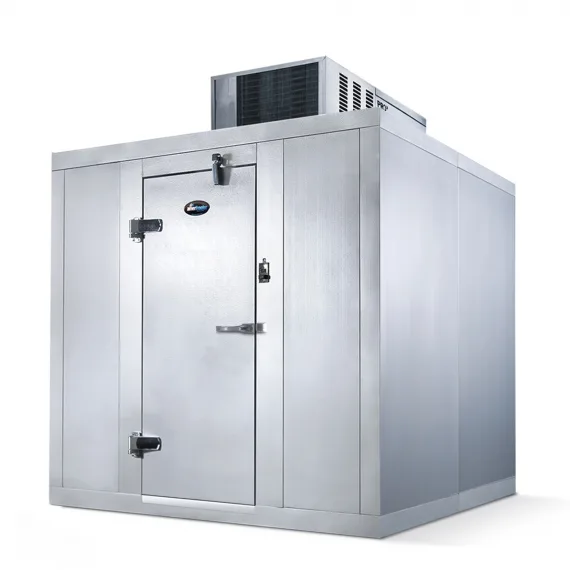
What are The Lighting and Visibility Standards for Walk-in Refrigeration?
The lighting and visibility standards for walk-in refrigeration encompass required light levels, emergency lighting standards, and energy-efficiency solutions to create a better and safer work environment for staff members. Adequate lighting plays a big role in minimizing accidents and uplifting the spirits of the personnel. Your choice of lighting should be illuminating enough without causing glare and be backed by back up power sources in case of power outages.
What are The Required Lighting Levels for Optimal Safety Inside Walk-in Refrigeration?
The recommended lighting levels for optimal safety inside walk-in units are 70-80 lumen per square foot (753.473- 861.112 lumen per square meter). Consider the color lighting to optimize the staff’s comfort. White lighting is often ideal for clear visibility and the workers’ eye comfort.
What are Emergency Lighting Standards for Walk-in Refrigeration?
Emergency lighting standards are regulations and guidelines that specify the requirements for lighting systems used in walk-ins during emergencies.
- Your backup power source should fuel the emergency lighting within the walk-in unit, offering safe evacuation in case of power outages.
- Emergency exit signs have to be alight at all times.
- Make sure that your emergency lighting is resistant to cold and water.
- Make sure to check their condition regularly if batteries power your fixtures. They might freeze over time if they aren’t specifically built for a freezer setting since they are not used frequently.
What are Energy-efficient Lighting Solutions?
Energy-efficient lighting solutions for walk-in refrigeration focus on reducing energy consumption while maintaining optimal visibility and preserving the quality of stored products. Implementing these solutions can significantly decrease operating costs and environmental impact. Key energy-efficient lighting options for walk-in refrigeration include:
- Upgrade Lighting Fixtures: Ensuring that all lighting fixtures are designed for energy efficiency and are compatible with the chosen energy-efficient bulbs can further enhance savings.
- LED Lighting: Led lightning is an energy-efficient lighting solution for walk-in coolers and freezers. With this option, you can achieve energy savings exceeding 85%. This is a worthy upgrade if your unit isn’t already equipped with LED lighting since LED lasts 10 times longer than fluorescent and 25 times longer than bulbs. It exudes 9 times less heat while operating compared to fluorescent lighting, which is great for your cooling mechanism.
- Motion Sensor Lighting: Installing motion sensors ensures that lights turn on only when someone enters the walk-in unit and turn off automatically after a period of inactivity. This prevents energy wastage by ensuring lights are not left on unnecessarily.
- High-Efficiency Fluorescent Lights: While LEDs are the most efficient option, modern fluorescent lights designed for cold environments can also be a cost-effective alternative. Look for models specifically rated for low-temperature operation.
- Task Lighting: Instead of lighting the entire space uniformly, task lighting focuses light where it’s most needed, such as specific shelving areas, reducing overall energy use.
- Timers: For walk-ins that need to be accessed only at specific times, timers can ensure the lights are on only during designated hours, further reducing energy consumption.
- Reflective Interior Surfaces: Using reflective materials on interior walls and shelves can enhance the effectiveness of installed lighting, allowing for the use of lower-wattage bulbs while maintaining good visibility.
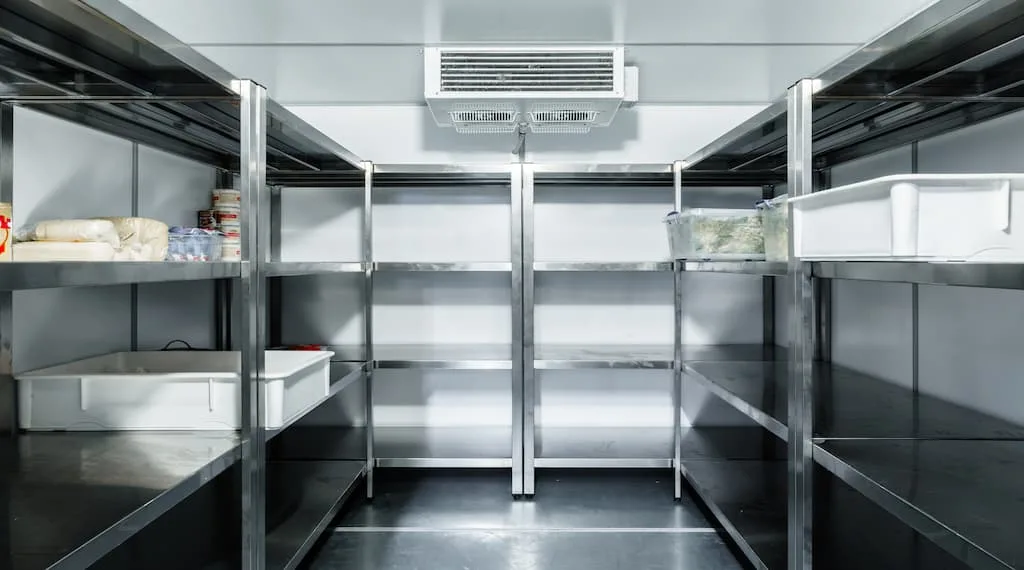
Employee Safety Laws and Training
Employee safety laws and training for working in a walk-in cooler or freezer are crucial for ensuring the well-being of the workers and the legal compliance of the business. Proper training according to working in refrigeration laws can minimize risks to your machinery and personnel and improve the efficiency of your business in general. Your training should include the following steps:
- Cold Stress Regulations and Awareness: OSHA mandates that employers must provide a safe working environment for employees, which includes protection against cold stress and related injuries or illnesses. Cold stress refers to the negative effects of cold exposure on your body. Training your staff about the symptoms and potential consequences of cold stress will help them realize when they should take a break and get ahead of injuries and illnesses.
- Personal Protective Equipment (PPE) Use: Employers are required to provide appropriate PPE, such as insulated clothing, gloves, and headgear, to safeguard employees from the cold temperatures encountered while working in refrigeration units. These outfits are layered to provide maximum coverage and protection. While they are pretty easy to put on and remove, including a section on PPE use during training will help your staff understand the importance of protection, how to care for this special equipment, and ensure they don’t skip any of the steps.
- Safe Work Practices for Walk-in Coolers and Freezers: Staff members should be trained on safe work practices while working in refrigeration units, including proper lifting techniques, avoiding prolonged exposure to cold temperatures, and taking regular breaks to warm up. Shadowing professionals for a day or going through day-to-day tasks during training can prevent harm to the staff’s health, such as hypothermia and frostbite.
- Emergency Procedures: Training should include an emergency response scenario to inform all workers of emergency procedures, such as how to respond to power outages, equipment malfunctions, or incidents of entrapment.
What are Emergency Protocols and Evacuation Plans for Walk-in Refrigeration?
Emergency protocols and evacuation plans for walk-in refrigeration units ensure the safety of employees and minimize the risks associated with potential emergencies by predicting scenarios and coming up with solutions for them. While your protocols and plans might change depending on your business layout or location, the following are key components of such protocols and plans:
- Emergency Contact Information: Maintain a list of emergency contact numbers, including local emergency services, management personnel, and maintenance technicians, so that staff members can easily reach the relevant people for fast help.
- Alarm Systems: Ring the alarm system to alert personnel in the event of emergencies such as temperature fluctuations, equipment malfunctions, or power outages. Digital systems can send direct notifications to the relevant person’s phone to quicken the process. Make sure the alarms are loud, easily audible, and clearly indicate the nature of the emergency. You can maintain efficiency by conducting regular drills.
- Communication Procedures: Establish a clear communication line to ensure that employees can quickly and effectively report emergencies to management or designated personnel and receive precise information and guidance to coordinate emergency response efforts. You can have pre-designated staff members for each potential scenario to divide the workload and establish a sense of order in the chaos.
- Evacuation Routes: You should identify several evacuation routes from the walk-in refrigeration unit. Make sure that the evacuation routes are clearly marked, well-lit, and free from obstructions, and inform the staff of these routes. You are obligated to have a minimum of 2 evacuation routes from the establishment, according to OSHA 1910.36 (b) (1).
- Safe Assembly Areas: Establish a designated assembly area outside the refrigeration unit where employees can safely gather after evacuating. This will create a sense of direction amidst the chaos and let employees take a breather in a safe space till the issue. is sorted out.
- Emergency Equipment: Provide emergency equipment such as fire extinguishers, first aid kits, and blankets within the refrigeration unit for use during emergencies.
Case Studies and Industry Standard
In 2023, a robber locked Chipotle employees into the walk-in freezer and ran away with the money. Thanks to the big fast food chain’s up-to-code kitchen, the staff members were able to open the door from within with the emergency release latch and leave unscathed, according to the news on www.ocregister.com.
Similarly, the strict following of industry standards and codes in large grocery stores such as Target prevent mass food poisoning every day.
Industry leaders prioritize safety for both the public and their employees through several key measures. These include thorough temperature and security monitoring, along with the implementation of regular, professional cleaning and maintenance schedules. They conduct extensive and frequent staff training programs to keep employees informed about upgrades and establish detailed emergency protocols. This ensures food spoilage and waste are minimized in the event of power outages.
What are Supplemental Safety Equipment for Walk-in Refrigeration?
Supplemental safety equipment for walk-in refrigeration encompasses all accessories and additions you can make post-purchase to improve the security of your unit. These supplemental equipment are listed below:
- Non-Slip Mats: Non-slip mats can prevent falling accidents. Since commercial restaurants store food in these units, dripping and spilling of certain ingredients is highly likely. While you should immediately clean up such things, non-slip mats will further ensure that staff members don’t randomly slip and fall.
- PPE: Protective equipment is essential to working in a walk-in cooler or freezer. PPE for walk-ins includes thermal pants, underwear, long-sleeved shirts, thick jackets, headwear, gloves, and more.
- Fireman’s Axe: A fireman’s axe is a last resort if the emergency releases and doors are stuck. It can be used to manually break free in an emergency.
- Fire Suppression Systems: Depending on what you store, fire is a danger even in a freezer. Fire suppression systems such as sprinklers or gas-based models react in case of fire and stop its spreading.
- Security Cameras: Installing and monitoring security cameras on large, especially outdoor, units could reduce the likelihood of thievery.
- Door Alarms: Door alarms alert the staff when the doors of the unit are left open. You can save lots of energy and clock issues with door hinges immediately, thanks to these alarms.
What are The Risks of Non-Compliance with Walk-in Refrigerator Standards?
The risks of non-compliance with walk-in refrigeration standards include legal ramifications, health hazards, financial consequences, operational disruptions, and damage to reputation. Understanding and complying with these standards is not merely a procedural formality but a critical measure to safeguard your health, the well-being of your employees, and the integrity of your business. The stakes of non-compliance are significantly high, underscoring the necessity of being well-informed about the key factors for walk-in refrigeration that outline best practices and regulatory requirements to mitigate these risks effectively. Recognizing the importance of these factors is essential in maintaining a safe, efficient, and successful operation.
- Legal Ramifications: The regulations around walk-in refrigerators and food service establishments are really strict for a good reason. The accidents around a non-compliant walk-in refrigerator can range from food poisoning to employees getting frostbite and hypothermia. Failing to meet these standards can be met with legal penalties that range from fines to big lawsuits, depending on the severity of the violation. For instance, a manager died of hypothermia in an Arby’s walk-in freezer in 2023. The family of the deceased sued the big fast food chain for 1 million dollars in damages, according to CBC NEWS and The Guardian’s news.
- Health Hazards: Non-compliance with walk-in refrigerator standards directly impacts the health and safety of both your customers and employees. Bad storage conditions can lead to your food and ingredients being spoiled, and this puts your customers at risk of getting food-related illnesses like food poisoning. Non-compliant walk-in refrigerators can put your employees at huge risk. In case they get locked in and can’t find a way out due to your walk-in refrigerator not being in line with standards, they can get frostbite, hypothermia, and, in the worst case, suffocation due to poor air supply or carbon dioxide from dry ice.
- Financial Consequences: The financial consequences of non-compliance aren’t just about having to pay potential fines. Your establishment might face significant profit losses due to your operations being interrupted because of complications arising from your walk-in. Your insurance companies might raise their fees due to your establishment being deemed unsafe, and customers might get frustrated and decide not to eat at your restaurant. Regular maintenance and being in line with the standards protect your health and safety, your profit, and the long-term health of your establishment.
- Operational Disruptions: Walk-in refrigeration standards are concerned with keeping your unit as safe and smoothly working as possible, and not complying with codes such as temperature regulation and monitoring or regular maintenance and cleaning can lead to your unit breaking down in the middle of the day. This, paired with being underprepared for such an emergency, can force you to close your restaurant midday and cost you a fortune in spoiled food.
- Damage to Reputation: With social media taking over the world, news of health and safety violations spread like wildfire. Word of mouth gets faster than you can fix your walk-in refrigerator problems, even if you’re a local establishment in a small town. Non-compliant businesses risk irreparable damage to their reputation every day. A customer base is built on trust and loyalty, which can be quickly erased by a health and safety issue. Prioritizing compliance with walk-in refrigerator standards can help you protect your reputation and keep a healthy customer base.
Conclusion for Health and Safety Standards for Walk-in
In conclusion, adhering to health and safety standards in walk-in refrigeration operations is really important for the foodservice industry to uphold the highest levels of public and staff safety. Compliance with regulations, certifications, and best practices ensures that customers receive food prepared in sanitary conditions and that staff members are safeguarded from potential work-related hazards. Regulatory bodies like OSHA, NSF, and USDA set guidelines and standards that dictate how the design, operation, and maintenance of walk-in refrigeration units should be done, covering aspects such as temperature regulation, inventory management, cleaning and maintenance, energy efficiency, emergency protocols, and compliance with legal requirements.
By implementing rigorous training programs for your employees, conducting regular inspections and maintenance, and investing in advanced monitoring systems, you can definitely minimize the risks associated with walk-in refrigeration operations. Case studies demonstrate the effectiveness of industry standards and codes in preventing accidents, such as entrapment incidents or mass food poisoning. Additionally, supplemental safety equipment, such as non-slip mats, PPE, fire suppression systems, and door alarms, further enhances the security and efficiency of walk-in refrigeration units.
Conversely, non-compliance can have catastrophic consequences, ranging from fines and lawsuits to mass food spoilage or poisoning. Therefore, prioritizing compliance with health and safety regulations not only ensures the well-being of employees and customers but also protects the reputation and long-term viability of food service establishments.

